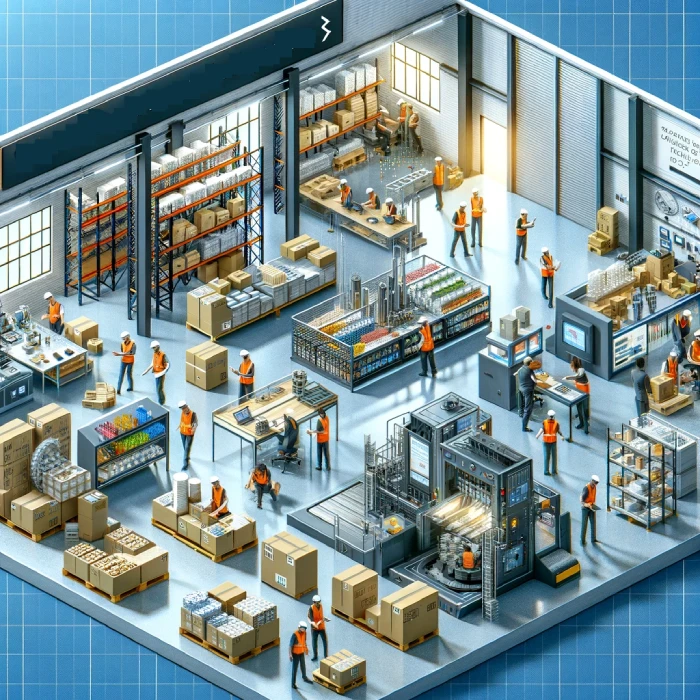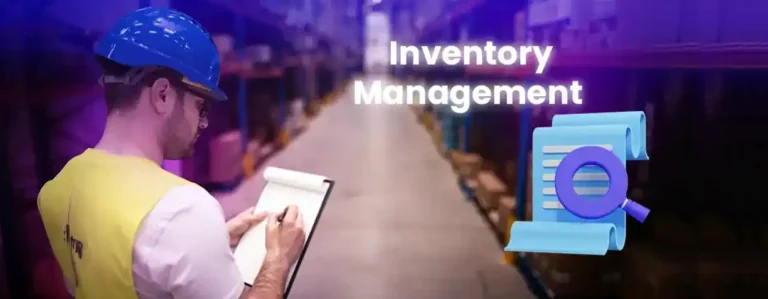In the intricate tapestry of modern supply chain management, the journey of goods from receiving to distribution stands as a testament to the sophistication and complexity of warehousing services. This essential phase in logistics not only bridges the gap between production and market availability but also significantly influences customer satisfaction, cost management, and operational efficiency. This article explores the various stages and aspects of warehousing services, from the initial receiving of goods to the final distribution, and how each stage contributes to the overall success of the supply chain.
Table of Contents
The Critical Role of Receiving in Warehousing
The journey in warehousing services begins with the receiving process. This initial stage is pivotal as it sets the groundwork for effective inventory management and order fulfillment. The receiving process involves several key steps:
Inspection of Goods: Ensuring the quality and condition of received items.
Verification and Counting: Confirming that the delivered quantities match the order.
Documentation and Record-Keeping: Updating the warehouse management system with new inventory.
Meticulous attention to detail during receiving is crucial. Errors at this stage can propagate through the supply chain, leading to inventory inaccuracies, stock shortages, or excesses.
Inventory Management: The Heart of Warehousing
Post-receiving, the focus shifts to inventory management, a critical component in the Receiving to Distribution process. Effective inventory management ensures that the right products are available in the right quantities and at the right time. It involves:
Stock Tracking and Control: Monitoring inventory levels to prevent overstocking or stockouts.
Warehouse Layout Optimization: Efficiently organizing goods for easy access and movement.
Use of Technology: Implementing advanced systems like RFID and barcode scanning for real-time inventory tracking.
This stage is where warehousing services intersect significantly with technology. The use of sophisticated warehouse management systems (WMS) is integral in modern warehouses, facilitating real-time visibility of inventory levels and movements.
Storage: More Than Just Keeping Goods
Storage in warehousing is not merely about finding space for products; it’s about strategic placement and preservation. Factors such as product type, turnover rate, and special handling requirements dictate storage methods. The goal is to maximize space utilization while ensuring product accessibility and integrity. Effective storage solutions can range from simple shelving to complex automated storage and retrieval systems (AS/RS).
Order Processing: The Link Between Warehouse and Customer
Order processing is a critical phase in the Receiving to Distribution spectrum. It is the point where the warehouse directly impacts customer satisfaction. This phase includes:
Picking: Locating and collecting the right items in the correct quantities.
Packing: Safely packaging items for shipment.
Shipping Preparation: Labeling and preparing items for dispatch.
Accuracy in order processing is paramount. Mistakes can lead to customer dissatisfaction and increased return rates, affecting the company’s bottom line and reputation.
Value-Added Services: Enhancing Warehousing Functions
Modern warehousing services go beyond traditional storage and order fulfillment. Value-added services such as product customization, assembly, kitting, and labeling are increasingly common, providing businesses with an edge in a competitive market. These services enable companies to tailor their products and packaging, meeting specific customer demands and market trends.

Distribution: The Final Frontier in Warehousing
Receiving to Distribution is the culmination of the warehousing process – the point where goods leave the warehouse and make their way to the customer. Effective distribution involves:
- Logistics Coordination: Working with carriers to plan and execute the transportation of goods.
- Route Optimization: Ensuring that delivery routes are efficient and cost-effective.
- Compliance with Regulations: Adhering to shipping and customs regulations, especially in international logistics.
The efficiency of the distribution process directly impacts delivery times and shipping costs, key factors in customer satisfaction and operational budget.
Embracing Technology: The Future of Warehousing
Technology is a game-changer in warehousing services. From automated guided vehicles (AGVs) and drones for inventory management to AI-driven predictive analytics for demand forecasting, technology is reshaping the landscape of warehousing. These advancements not only enhance efficiency and accuracy but also open up new possibilities for handling complex logistics challenges.
Read more: Global Warehousing Network: Paving the Way for International Expansion
Conclusion
The journey from receiving to distribution in warehousing services is a complex but vital component of the supply chain. Each stage, from meticulous receiving processes to strategic inventory management, efficient order processing, and effective distribution, plays a crucial role in ensuring that products reach their destinations in the most efficient and cost-effective manner. As technology continues to evolve, warehousing services are set to become even more integral to the success of businesses worldwide, driving innovation and efficiency in the global marketplace.
Read more: What Does DDP Mean? A Comprehensive Guide to Understanding Delivered Duty Paid Shipping
FAQ:
1. What does “Receiving to Distribution” mean in warehousing services?
“Receiving to Distribution” refers to the entire process in warehousing, from accepting incoming goods (receiving), managing inventory, processing orders, to finally distributing products to their final destination.
2. What are the challenges in the distribution phase of warehousing?
Distribution challenges include ensuring timely delivery, optimizing transportation routes, and complying with shipping regulations, all crucial for customer satisfaction and cost-effectiveness.
3. How do warehousing services ensure efficiency in the Receiving to Distribution process?
Efficiency is ensured through strategic warehouse layout design, employing advanced management systems, continuous process optimization, and leveraging data analytics for informed decision-making.





